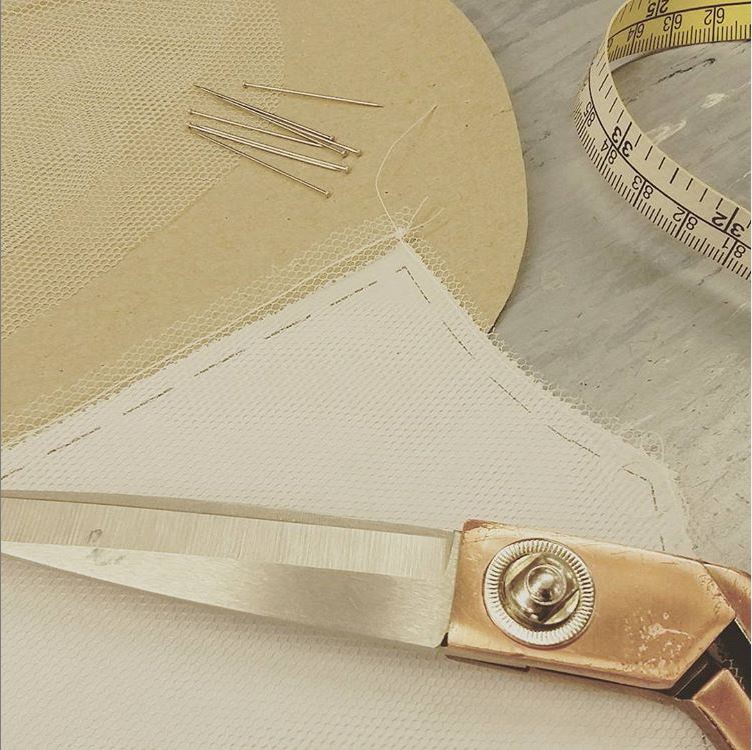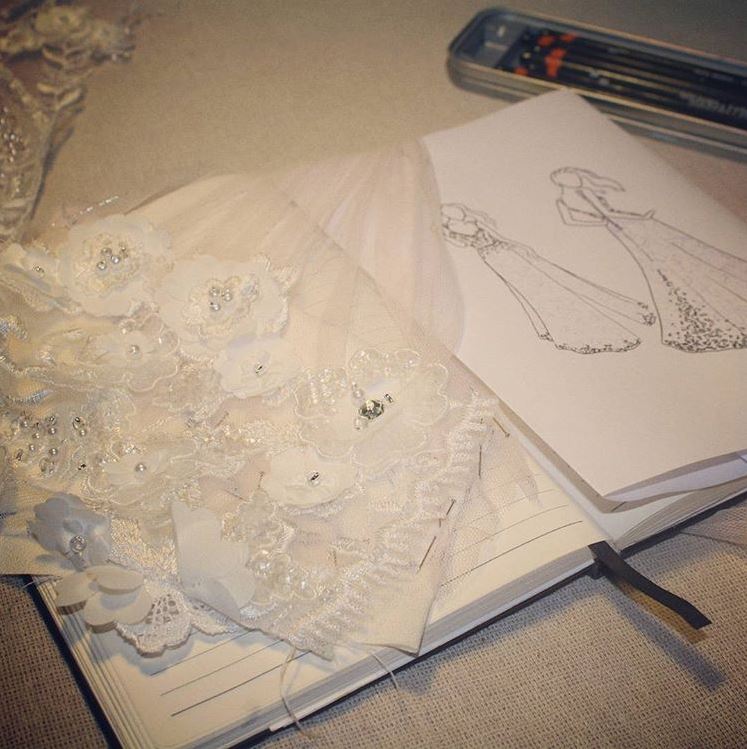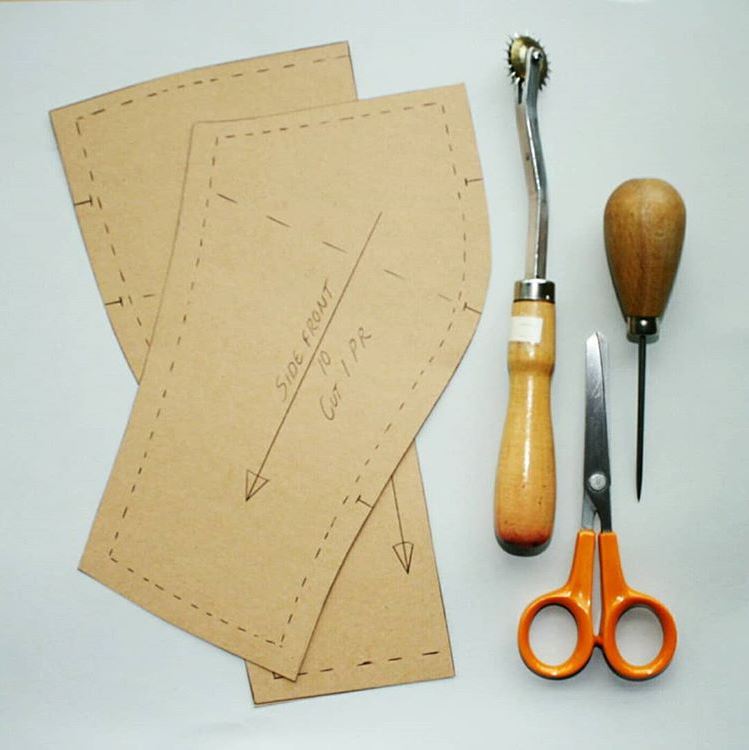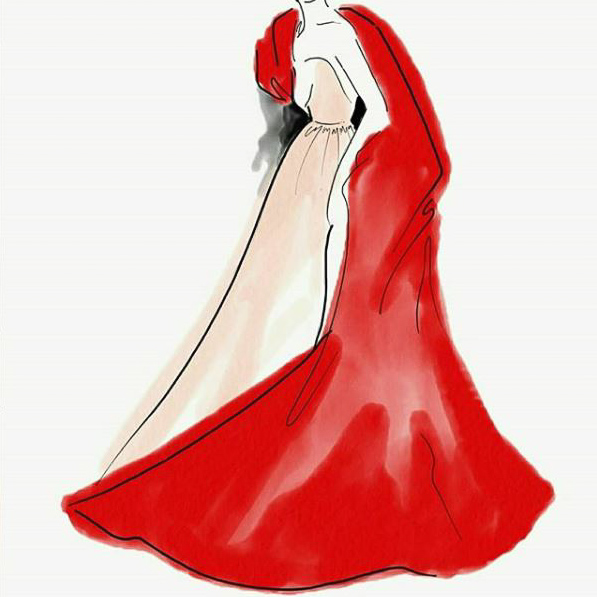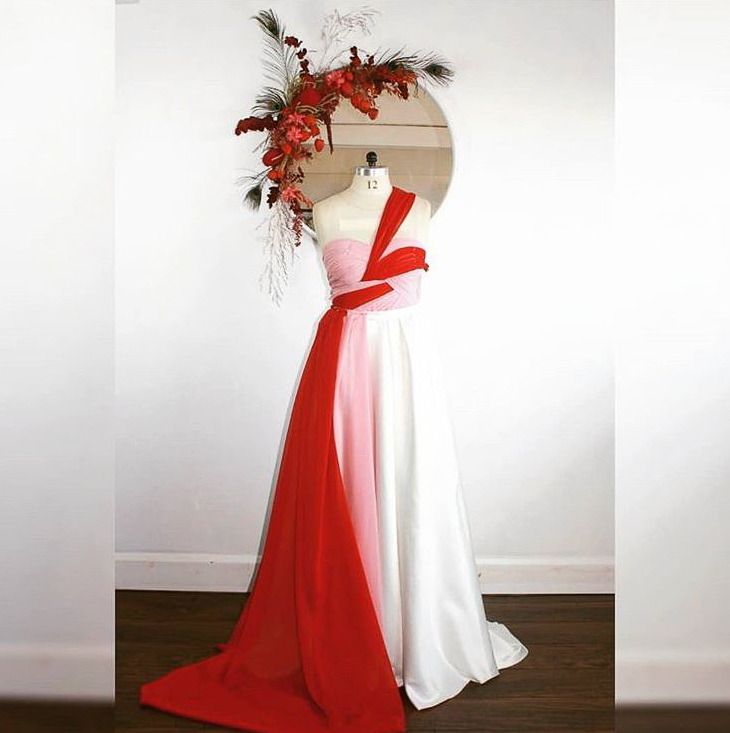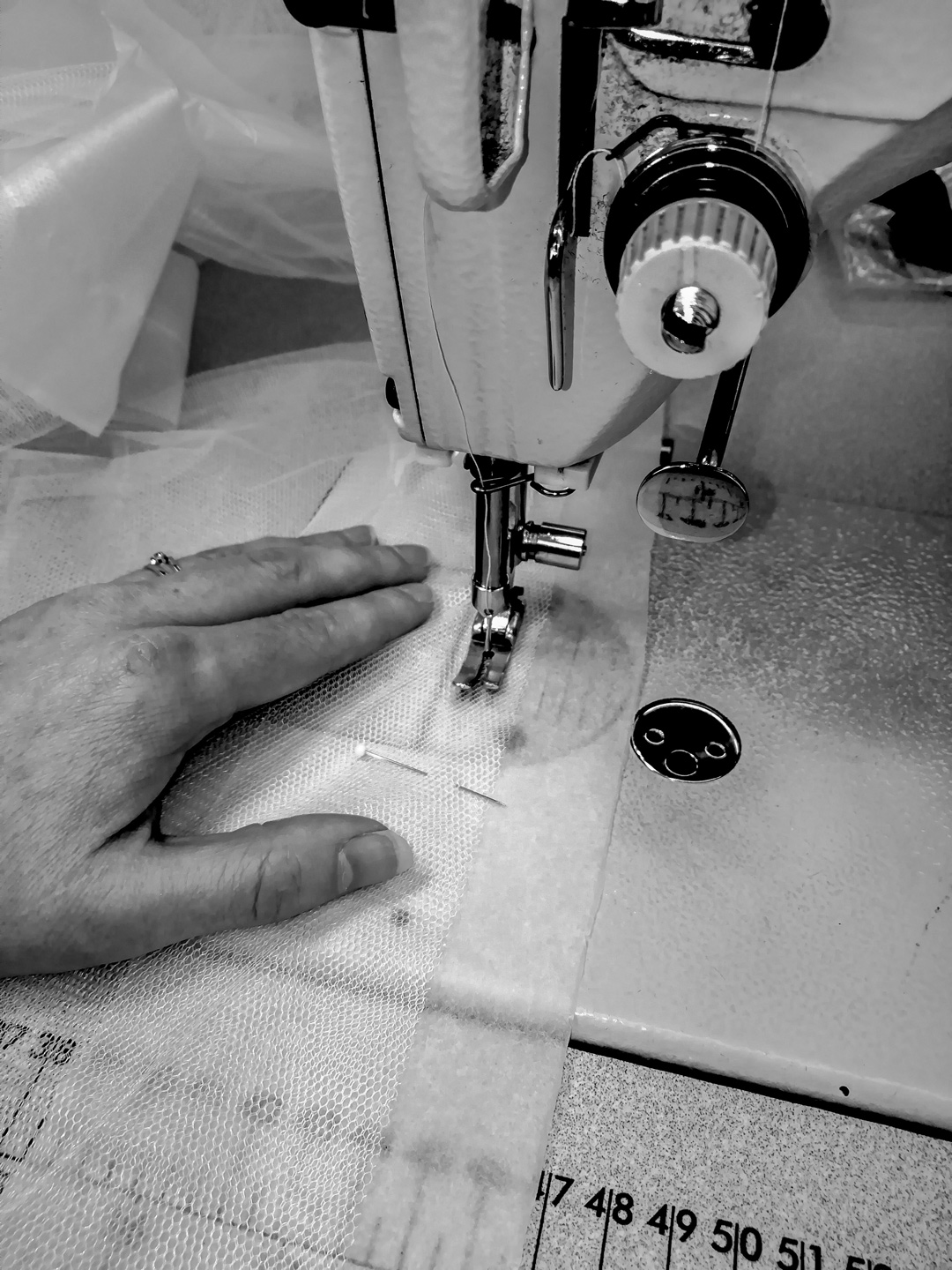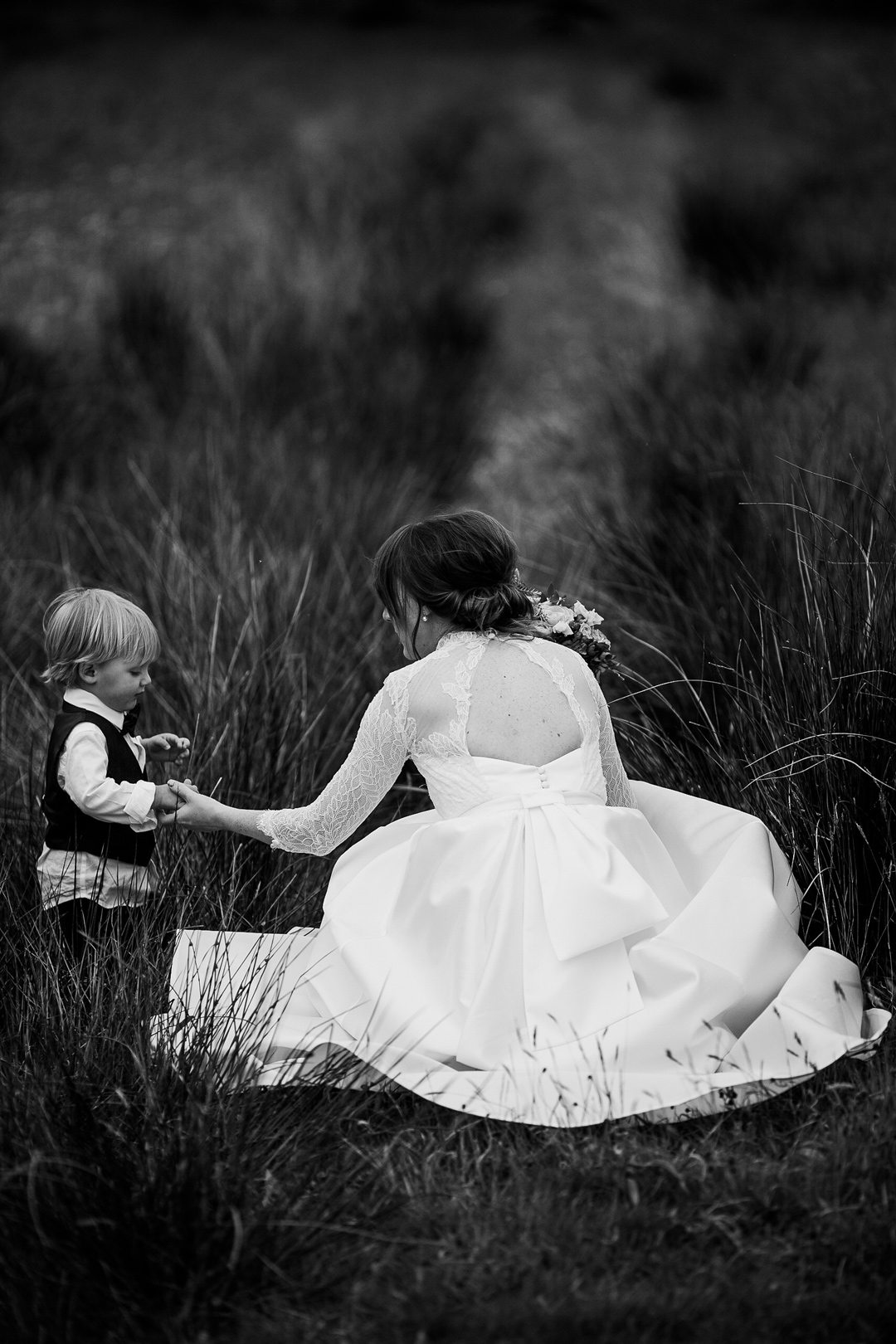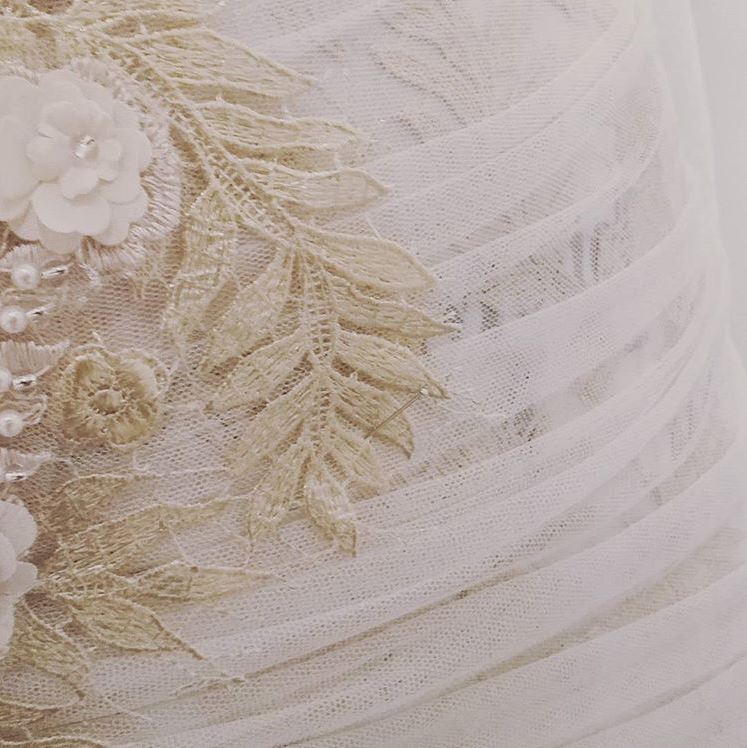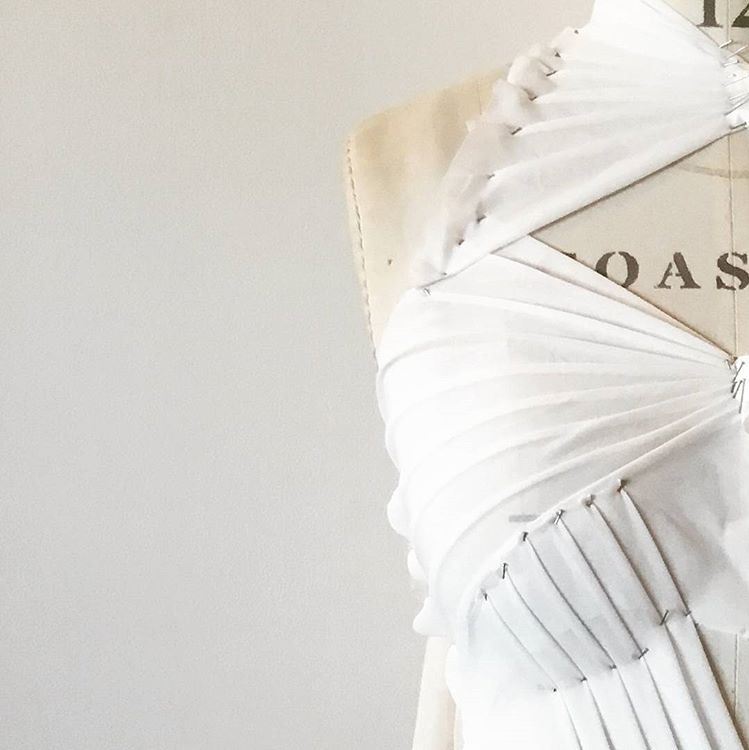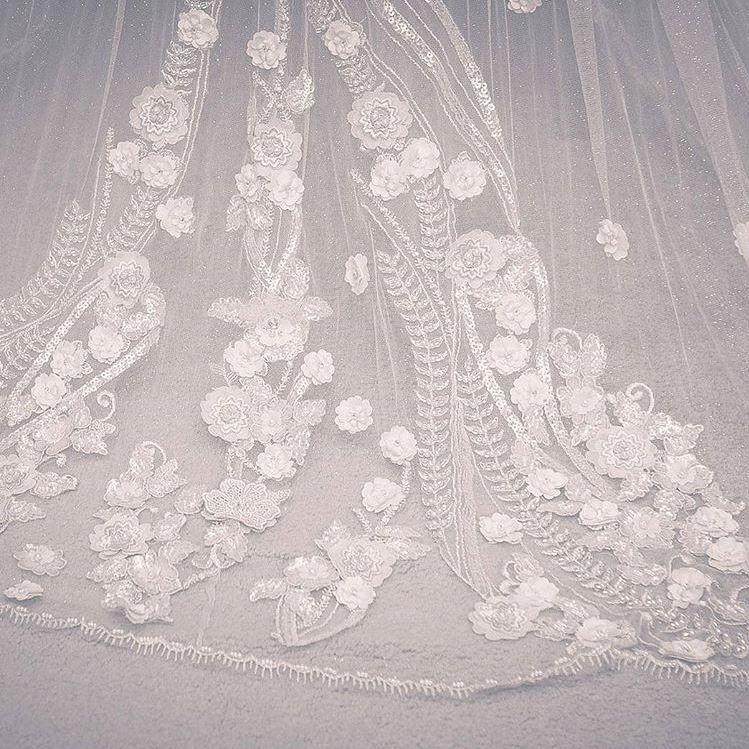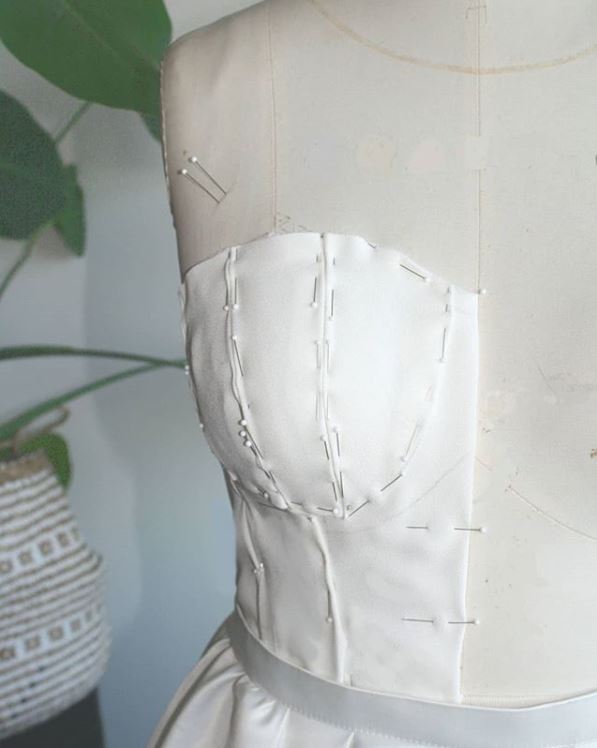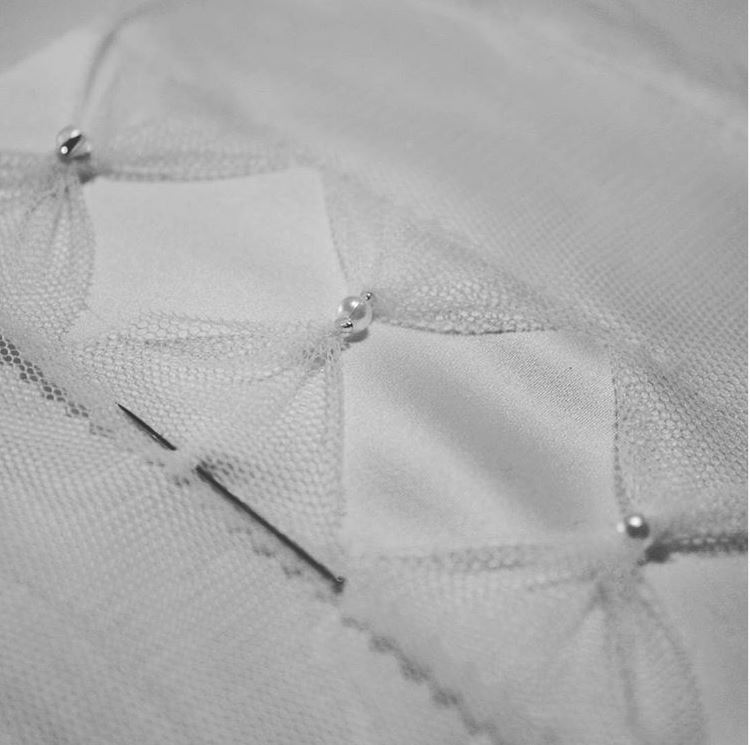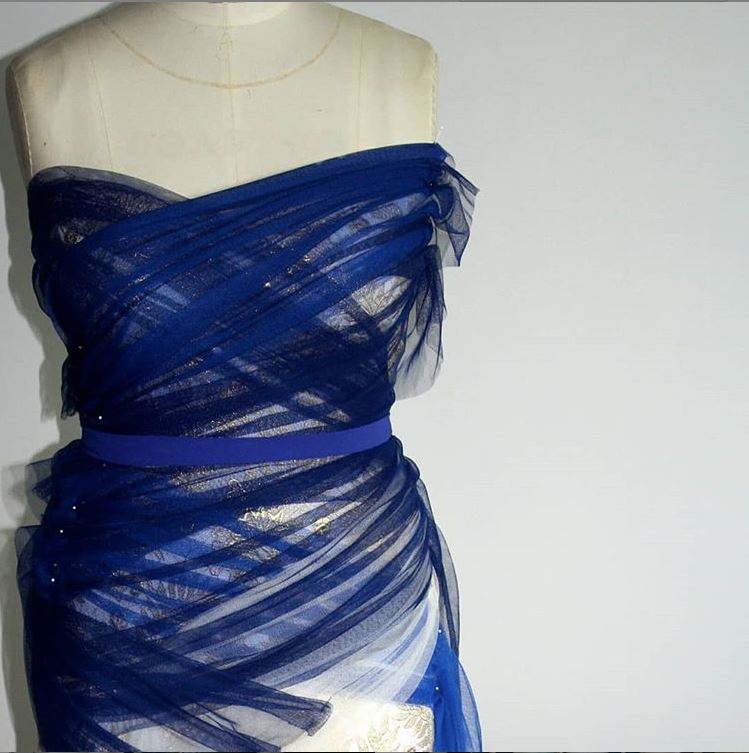CHARLOTTE - BRIDAL DESIGNER
I was fortunate enough to get to chat with Charlotte of Charlotte Cross London. Charlotte has many strings to her bow as she is an experienced pattern cutter as well as owning her own bespoke bridal wear business. We spoke about designing gorgeous dresses, draping fabric on the stand, and making the mother of the bride cry (with joy of course!) You can see behind the scenes pictures on Charlotte’s Instagram.
Can you explain what your job role is?
I kind of have two jobs, I work as a pattern cutter at Karen Millen, and I also have my own bespoke bridal company called Charlotte Louise Bridal. I create wedding dresses for brides that are looking for something a little bit unusual. Most of the time they've gone to the shops and they can't find that dream dress, so it's when they start going down the route of having something made just for them.
Why did you want to be a bridal wear designer?
When I started studying fashion I was always drawn more towards the extravagant, glamorous dresses. I think most people are to be honest, it just seems so much more fun. Even just sketching them is more exciting! As I started my career, I started to go down the more commercial route, and then started work as a pattern cutter, which I was really drawn to as I love that technical side as well. At the end of uni I decided pattern cutting was the way that I wanted to go. I've always enjoyed pattern cutting, for me, it's that perfect balance of a creative job, but using a lot of technical skills and a little bit of maths and problem solving. However I've always had my own creative outlet on the side as well. I had my own collection for a couple of years after finishing uni and then I went into bridal naturally, really. Someone came to me saying they wanted a wedding dress. They knew that I was a pattern cutter and asked for help. It started from there and I absolutely loved it because I guess the one thing that's slightly missing when you're pattern cutting for a company is you don't get that personal interaction with the customer. What I really love about bridal is that you're on that personal journey with them the whole time. You meet them when they're right at the beginning of deciding what wedding dress they want and then go with them the whole way through, when they are just weeks away from their wedding. It's really exciting just to be a part of that and getting to actually see their reaction. I was kind of hooked from there really.
“When I started studying fashion I was always drawn more towards the extravagant, glamorous dresses”
How and where did you learn your skill?
I studied fashion at uni. I learned a lot of the skills there, how to sketch, sourcing fabrics, drawing from inspiration and basic pattern cutting skills. Although I developed my pattern cutting skills through the graduate scheme at Karen Millen. I started that straight after uni and it was just amazing. This was 11 years ago now, I started with all the brands, I was measuring with Whistles, but then doing a bit of training with each brand on the pattern cutting side. When I was getting towards the end of my training, I started actually working for Oasis and then went to Coast and then on to Karen Millen (they are all part of an umbrella company) That was an incredible opportunity, it was four years of learning from the best. I was exposed to all of their knowledge and skills. I've always been so grateful for that.
What is the best thing you were taught when you were starting out?
There's just so much! One thing I always think of was from Mike (a legendary pattern cutter from Karen Millen who has now retired but was a whizz at all things tailoring). He really drummed into me the importance of being precise. He said, “your pattern has got to be millimetre perfect, because everyone after you is going to distort it a little bit. When it gets cut, someone will go outside the lines by a few millimetres. When it gets sewn, they'll take a little bit more, or a little bit under on the seam allowance.” So to give it a head start, you've got to make sure your pattern is perfect especially in the tailoring, that's really essential. So now I check those measurements again and again.
“your pattern has got to be millimetre perfect, because everyone after you is going to distort it a little bit. When it gets cut, someone will go outside the lines by a few millimetres. When it gets sewn, they'll take a little bit more, or a little bit under on the seam allowance.”
What is your top tip for home sewers to improve their sewing?
I've learned to be really methodical, by laying out step by step how you're going to do everything, so that you're not going back and thinking oh, I should have done that bit first. Literally writing it out step by step, how to construct it and being patient because whenever I try to rush and think I'll just sew that really quickly tonight, it always goes wrong. I always have to unpick and end up getting really stressed out. Whereas if I think it's going to take about a week to sew this, it seems to go smoother.
What is your favourite tool to use at work?
It probably would be Gerber, it just makes pattern cutting so much quicker, more efficient and more precise. Also the Pattern Master. Even though I don't use it much because everything is so digital now, but whenever I'm pattern cutting at home, I need it for drawing a nice curve, measuring seam allowances, it's the Swiss Army Knife for pattern cutting.
“the pattern master is the Swiss Army Knife for pattern cutting”
What is your favourite garment to work on?
Dresses. I really love draping and creating on the stand because I find it goes hand in hand with the design process. Designing flat only gets you so far before you have to start working on the garment in 3D, because you can't really tell how it's going to look just from a sketch. What looks really pretty on a piece of paper might look really different in 3D. It's just fun draping with the fabric and seeing almost what the fabric wants to do itself. I think it's a nicer way to work instead of trying to do it all by the pattern and then forcing the fabric to go in a certain way.
“I really love draping and creating on the stand because I find it goes hand in hand with the design process.”
How does the design process with the customer work?
At the first consultation we have, I'll speak to them about what stage they're at, have they got any ideas of what they want? If they haven't, I'll suggest that they start a Pinterest board, and to go and try dresses on as well because you just don't know what silhouette is going to suit you. Then I'll start sketching from what they've sent me and keep it quite broad at that stage. So I might send them 10 sketches, incorporating quite a few different silhouettes and styles. I'll ask them to pick a couple they like and ask them to highlight features they particularly like or don't like and then just keep narrowing it down from there.
I try and get as quickly as possible to the first sample because you don't want to spend too much time before you get to that stage because it's the first time they will have actually tried anything on. Ideally that’s within the first two or three months, because although it hasn't happened to me yet, there's always that risk that they might not like the silhouette and want to start from scratch. Often the design develops, for example for one client we started off with a slinky bias cut dress and it was very simple. As we were fitting, she decided she wanted more of a blousson effect on the top and then we added a belt. It was really nice, that's what I like about working in this way, it develops naturally. I hadn't actually sat down and sketched that for her, it was as we were fitting and how she felt in the dress. She felt that she wanted something a bit looser on the top, so we tried it there and then.
What is the most exciting project you’ve ever worked on?
The first woman who came to me who wanted a full on gown. Loads of embellishment, long train, veil, everything and it was really daunting and there was some doubt at the beginning, lots of sleepless nights about how I was going to be able to pull this off. So I just kept going with it and really gave it my all. I was focusing so hard, and determined to do a really great job. On that job I started working with the seamstress who now sews most of the wedding dresses for me and that was a lifesaver. Finding her was absolutely brilliant and she’s one of those people that's so calm, she reassured me straight away. Having her on board then made me feel a lot more confident that this was definitely all going to come together. Then seeing the dress in the final fits and seeing the actual wedding photos was just amazing. For me was a real game changer. That was the point where I thought, yes, this is it, I can do it and I want to do it and this is the direction that I want to go in.
What is the best part of your job?
Seeing the brides in their final dresses in the last fitting, the thing that makes me so happy is seeing the mum's crying tears of joy. I'm always looking at the mum and thinking 'come on, cry'! And then I know I've done a good job when they start crying as soon as their daughter walks into the room. It's just an amazing feeling.
What advice would you give someone that would be hoping to follow in your footsteps?
I know I've got a tendency to sometimes try and look too far ahead and it almost freaks me out a little bit. So I would say concentrate on just the next step ahead and work towards that and then think about the next step when you're at that stage, so that you don't feel too overwhelmed. Take it step by step, and then before you know it, you look back and you realise how far you've come.
“Take it step by step, and then before you know it, you look back and you REALISE how far you've come.”
All images belong to Charlotte Cross London unless otherwise stated, and have been used with their permission.






